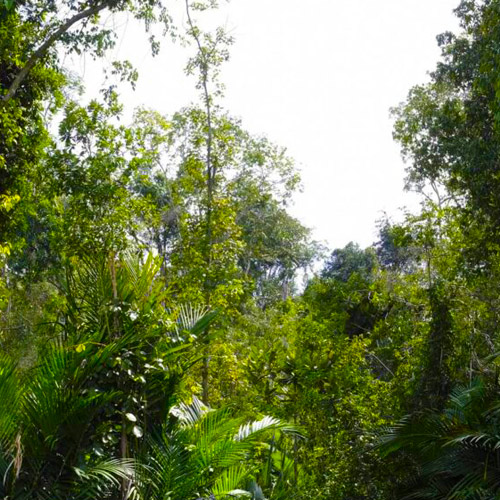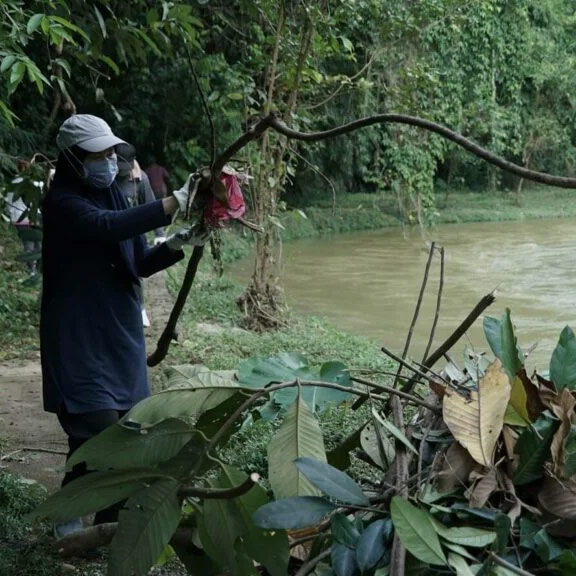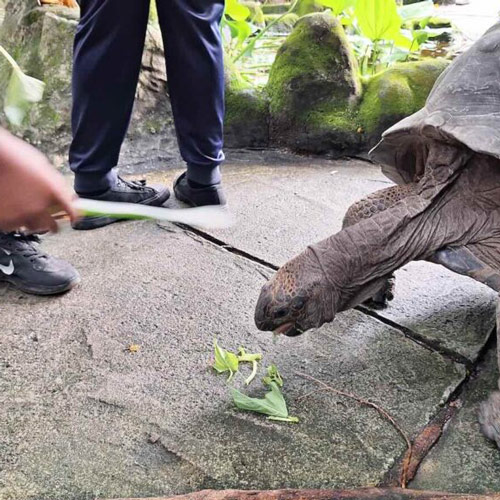Note: This story might contain factual or contextual inaccuracies as it was submitted by the authors as part of a competition and was published for the judges to evaluate without any editing or corrections made by the organisers or YELL.
You’re rushing between classes, takeaway lunch in hand, and you toss the packaging into the bin without a second thought. But at that very moment, 5-8 trucks loaded with around 10 tons of waste are already making their way to the Jeram landfill.
In 2023 alone, Universiti Malaya sent 1554.85 metric tons of waste to the Jeram landfill. Imagine a convoy of 750 trucks filled with trash, enough to stretch over 7 km!
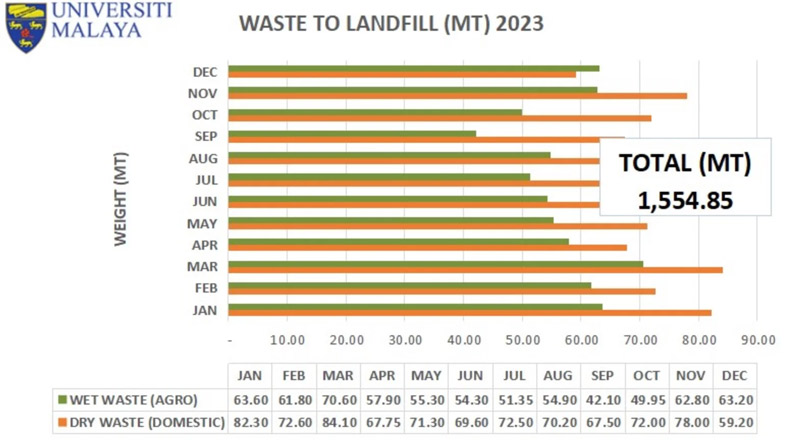 Source of total weight of waste to landfill in 2023. (Credit: Estates Department (JHB), Universiti Malaya)
Source of total weight of waste to landfill in 2023. (Credit: Estates Department (JHB), Universiti Malaya)
In November 2024, Universiti Malaya introduced a zero single-use plastic policy. Vendors swapped plastics for paper packaging and wooden utensils. A win for the environment, right? Here’s the catch: Are paper alternatives really the heroes we think they are? Are they truly recyclable, biodegradable, and sustainable for our planet? Or are they merely partners in crime hiding behind the green label? Could this transition make our waste problem worse?
Try this at home:
Get a used green packaging, be it a paper container, biodegradable plastic, or a paper straw. Bury it in your backyard and come back again after 3 months. Will it degrade? That’s for you to find out.
So…what is the problem here?
It is common knowledge that paper is much more eco-friendly compared to plastic, and we did think the same until we started digging deeper. One of our key knowledge partners when we embarked on this journey was Universiti Malaya Zero Waste Campaign (UM ZWC).
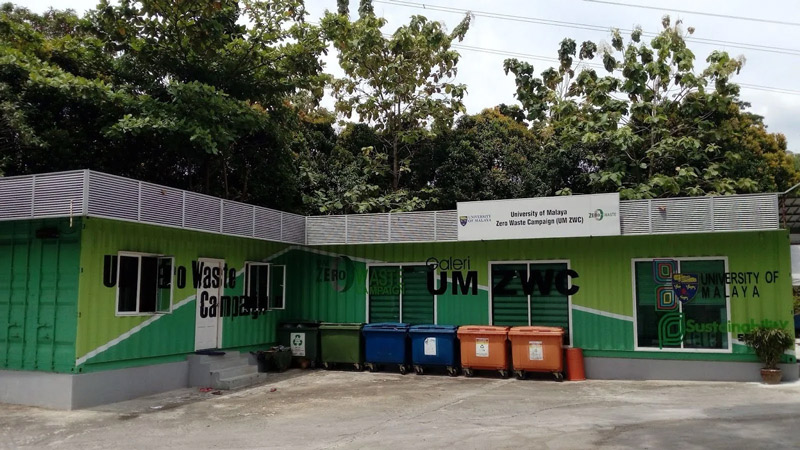 Universiti Malaya Zero Waste Campaign (UM ZWC) aimed to spearhead the development of a sustainable waste management model in the campus, ultimately achieving the status of a zero-waste campus. (Credit: UM ZWC)
Universiti Malaya Zero Waste Campaign (UM ZWC) aimed to spearhead the development of a sustainable waste management model in the campus, ultimately achieving the status of a zero-waste campus. (Credit: UM ZWC)
Contrary to popular belief, multiple factors indicate that paper containers may not be as eco-friendly as they seem.
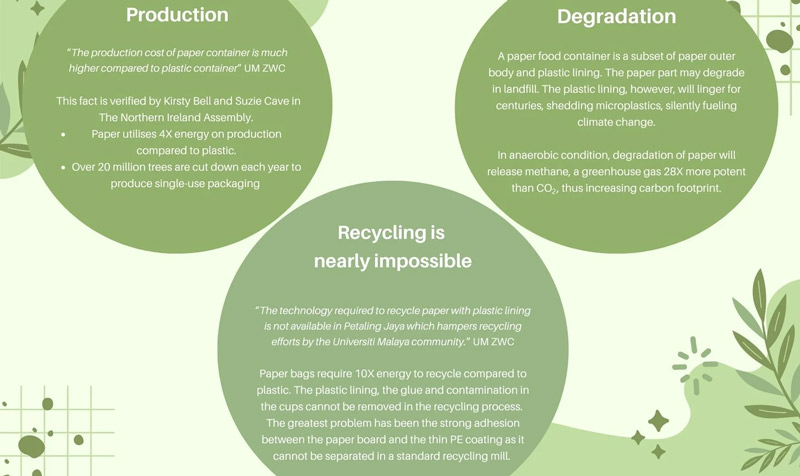 Issues when it comes to paper alternatives in the food packaging industries. (Credit: Nur Hasfarzana Athirah)
Issues when it comes to paper alternatives in the food packaging industries. (Credit: Nur Hasfarzana Athirah)
"Paper packaging is usually lined with plastic which doesn't degrade naturally and poses threats with leakage of microplastics. Biodegradable waste is also often a myth because it requires specific conditions (temperature, humidity) to break down - doesn't solve the issue by simply throwing them into soil. If organic waste or otherwise end up at the landfill, it may decompose but lead to release of methane gases significantly more harmful than CO₂. So where's the actual waste reduction here?" said Tasha from Zero Waste Malaysia.
In light of this finding, we shifted our aim to report daily production of single-use items in Universiti Malaya.
Trash segregation at one of the Universiti Malaya eateries. (Credit: Nur Hasfarzana Athirah & Wong Yee Shuen)
A total of 5.8 kg of disposable packaging and utensils was found in one eatery, of which 3.0 kg was paper and 2.8 kg was plastic, surprisingly high even after the Zero Single-Use Plastic Policy. According to Mr. A, these numbers are an underestimation, taken at the end of exam week, when most of the students departed for their hometown.
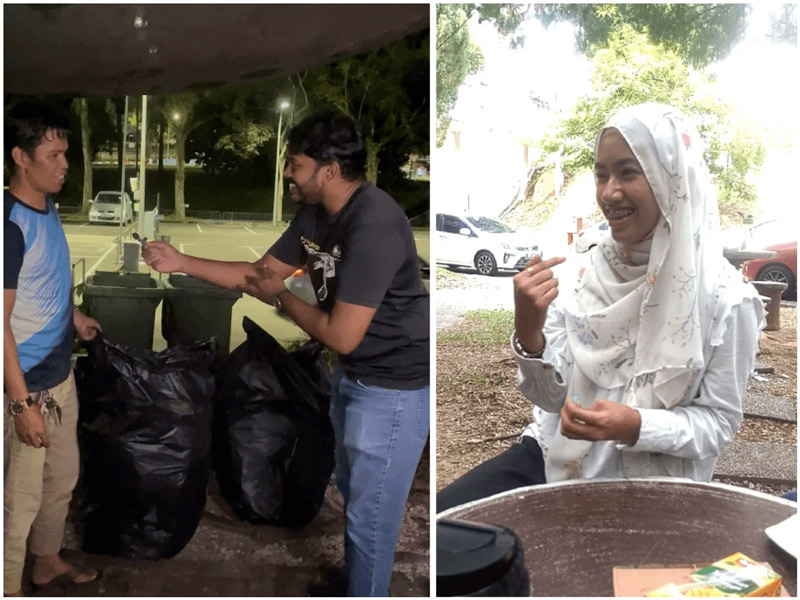 Interview of stakeholders, Mr A & street interview of Universiti Malaya students. (Credit: Raj)
Interview of stakeholders, Mr A & street interview of Universiti Malaya students. (Credit: Raj)
With more than 50 stalls across Universiti Malaya, that’s nearly 200 kg of disposable packaging heading straight to landfills every single day.
Now, how well is the Universiti Malaya community informed about the eco-friendliness of using paper containers? Let’s find out.
Plastics are bad for the environment; we all know that. Evidently, 1 in every 2 Universiti Malaya students in our survey believes that paper packaging is the greener choice for the environment.
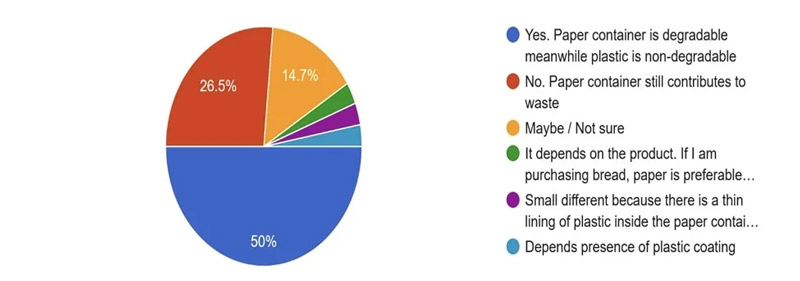 Universiti Malaya community’s opinion on whether paper packaging makes a meaningful difference towards the environment. (Credit: Universiti Malaya Community Perspective Survey, 2025)
Universiti Malaya community’s opinion on whether paper packaging makes a meaningful difference towards the environment. (Credit: Universiti Malaya Community Perspective Survey, 2025)
While the community expresses enthusiasm for the environment and is willing to pay more for sustainable packaging, the transition from single-use packaging to reusables remains challenging. Students are keen on eco-friendly alternatives but are misinformed about the nature of paper containers. This false confidence blinds us to the simplest real solution, which is bringing your reusables (BYO). Switching from plastic to paper packaging merely shifts the problem instead of addressing the root cause of waste generation.
 Our key knowledge partner representatives. From left: Affan Nasaruddin from Universiti Malaya Sustainable Development Change (UM SDC), Puan Mairuz from Universiti Malaya Zero Waste Campaign (UM ZWC), and Tasha Sabapathy from Zero Waste Malaysia.
Our key knowledge partner representatives. From left: Affan Nasaruddin from Universiti Malaya Sustainable Development Change (UM SDC), Puan Mairuz from Universiti Malaya Zero Waste Campaign (UM ZWC), and Tasha Sabapathy from Zero Waste Malaysia.
Here are the stakeholders’ solutions to the problem:
“Compostable material.”
“Refuse and reduce consumption of single-use items.”
“Practice waste segregation.”
Final call to action
Convenience is the greatest barrier in transitioning to reusables, and support from the university plays a major role in shifting the community behavior. Universiti Malaya can create a comprehensive system that provides students with food containers, alongside facilities such as washing stations. Moreover, students expressed willingness to bring reusables if eateries offer discounts as an incentive. However, for these measures to succeed, the university must collaborate with vendors and establish a policy mandating reusable systems to ensure affordability and convenience to normalize sustainable practices. To complete the system, merit marks could be awarded for every purchase made with reusables, which would appeal especially to students.
Puan Mairuz from UM ZWC suggested establishing a rental system for tableware from Universiti Malaya Estates Department (JHB) for any events organized in Universiti Malaya. To quote Puan Mairuz, “The Estates Department rents out tables and chairs for events. Why not tableware as well?”. And this has already been carried out successfully in several residential colleges.
With full support from Universiti Malaya management, it’s equally important for the Universiti Malaya community to recognize their responsibility as consumers and the environmental impact of every choice they make. Real change starts with each of us, and while it can feel uncomfortable, it sticks best when taken one step at a time, at our own pace. Let’s begin with simple shifts in our daily habits, like using our own bottle whenever we order a drink.
True sustainability requires systemic change where policies, vendors, and individuals collaborate to reduce waste at its source. Students’ voices matter, and it is important for the youth to demand this change for a sustainable future.
Ultimately, the solution to the waste issue lies beyond merely swapping materials. Universiti Malaya has the opportunity to lead this shift, transforming good intentions into lasting impact. The choice is clear: invest in real solutions or risk perpetuating a cycle of waste disguised as progress.
Disclosure:
The authors used AI tools (e.g., Otter.ai and ChatGPT) to transcribe recorded audio interviews, reorganise transcripts with original interview questions, and re-word survey questions into more active voice. They used ChatGPT to draft the lede for a better hook.
This story is a finalist entry that was produced as part of the “Environmental Stories Workshop and Competition”. The workshop and competition was co-organised by Macaranga Media, Universiti Malaya, and Taylor’s University. The event was funded by a grant from Youth Environment Living Labs (YELL), administered by Justice for Wildlife Malaysia. The content of this story does not necessarily reflect the opinion of YELL and their partners. The Award Ceremony will be held on 2 August at Universiti Malaya.




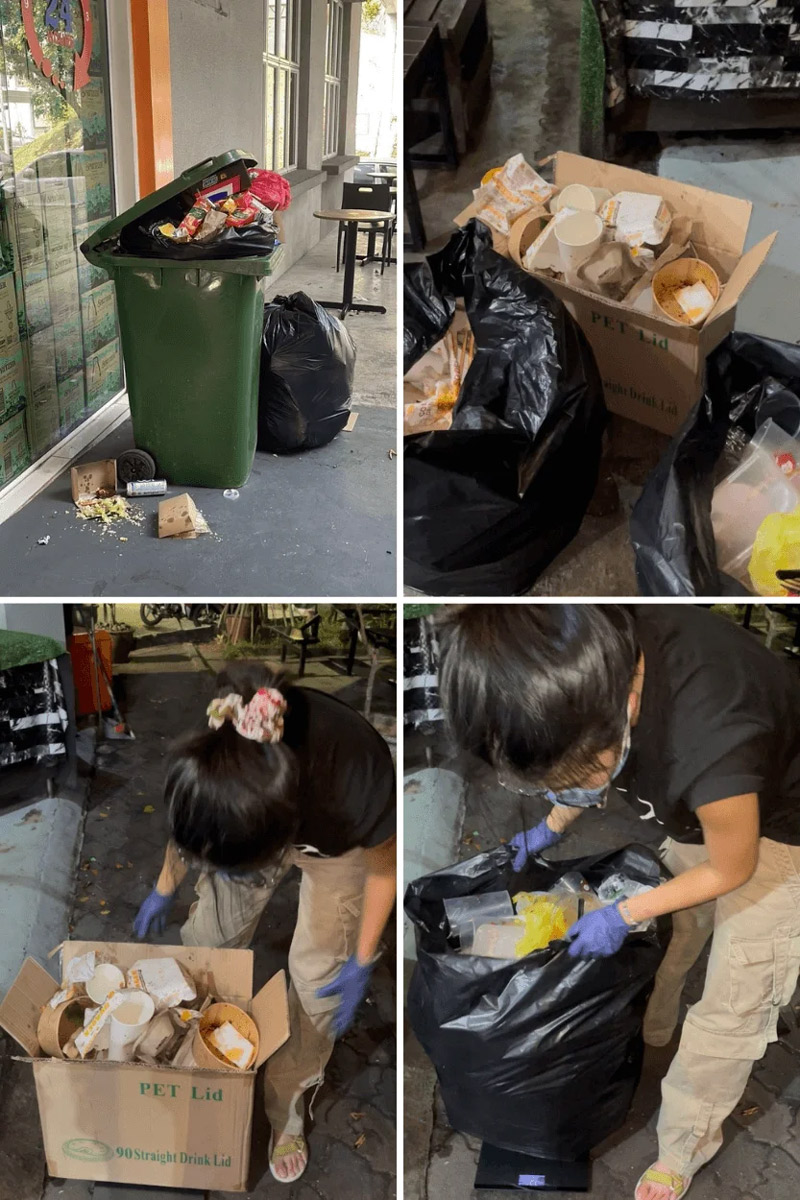

 Universiti Malaya community’s opinion on whether paper packaging makes a meaningful difference towards the environment. (Credit: Universiti Malaya Community Perspective Survey, 2025)
Universiti Malaya community’s opinion on whether paper packaging makes a meaningful difference towards the environment. (Credit: Universiti Malaya Community Perspective Survey, 2025)
